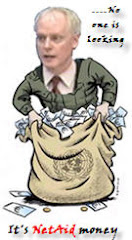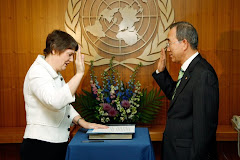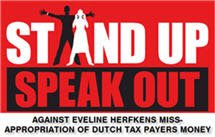Why is the Cash-for-Work project needed?
· Poverty is chronic throughout the West Bank; the continuous conflict has had a severe impact on the Palestinian economy, despite some easing of movement restrictions from mid-2009, in September 2009 the World Bank affirmed this had not led to sustainable economic growth.
· Studies show that the unemployment levels are particularly high amongst refugees, at 26 percent, the highest being amongst the youth, at 54 percent.
· 29 percent of refugees both in and outside camps are food insecure, meaning they find it difficult to cover basic needs such as food.
· Households spend an average of 49 percent of their income on food, meaning they have very little left to spend on other essentials such as shelter and education, essentially further entrenching poverty through a cycle of debt.
· Due to debts, once a household has fallen into deep-poverty, it is more difficult to lift the family above the poverty line, which means they need more cash-for-work in order to feel a positive impact on their livelihood. CaWP has adapted its Programme to allow for such refugees to obtain work opportunities.
Who benefits?
· The programme helps all vulnerable refugees, especially the most vulnerable to food insecurity such as female-headed households, herders and the disabled.
· CaWP provides an income and basic security to help refugees cope with conflict-related economic hardship, such as land confiscation, destruction of homes and shops and loss of employment in Israel.
· CaWP currently provides 4,365 jobs per month, about 35 percent of which are carried out by women, 20 percent by youth aged 18-24 yrs, Three percent by herders and 0.5 percent by disabled.
· Between April 2010 and March 2011, JCP will create 80,000 short-term job opportunities (directly helping 40,000 households or 230,000 people), of which 28,000 jobs will be for women (35 percent of total), 2,400 for herders (3 percent of total) and 400 for people with disabilities (0.5 percent of total).
· JCP also caters for the specific needs of refugees living in Areas C and the Seam Zone by providing resources to help them resist forced displacement and better cope with land confiscations and settler harassment.
CaWP opportunities help to build health and educational facilities, maintain traditional handicrafts and backyard farming, and generates income for the poorest refugees.
How many beneficiaries are women?
· The project actively targets female beneficiaries by providing work opportunities which suit social values and are physically accessible to women.
· Female participation in CaWP has increased over 2009 to a steady 35 percent per month by the third quarter of the year. This is a rise of 15 percent from our current target of 20 percent, and will be our new minimum target for next year.
· To hire more women, JCP has provided special materials and tools for herding women (such as sewing machines and other materials for carpet weaving and handicraft) as well as for gender-sensitive jobs such as clerical work, assistance in nurseries, schools and libraries, and social work.
· Many female labourers have been hired by municipalities and village councils to help plan and implement JCP's CaWP activities.
What jobs does the program support?
· As an emergency programme, CaWP targets the most vulnerable Palestine refugees who tend to be those without employable skills. Therefore, the majority of jobs offered require skills that can be learned on the job or involve traditional skills and workmanship.
· UNRWA has developed a database (Project Daa'm) which measures the socio-economic vulnerability of each household in detail, thereby tackling the complex and multilayered issue of poverty in the West Bank. As part of its job creation activities, CaWP will target the most vulnerable families identified by Project Daa'm offering them community-based work opportunities most suitable to their profile.
· JCP provides labour for the Olive harvest every year thus helping the national economy and enabling refugees to access farmland in remote areas.
· JCP labourers work for periods of one to three months in villages and refugee camps or, for those whose movement is restricted (such as herders), in their immediate surroundings. They do a variety of jobs ranging from cleaning, rehabilitation and construction, farming, sewing, teaching and assisting in offices and educational facilities.
· Beneficiary labour is used to improve the refugees' living environment, the conditions of public works and the delivery of services, ultimately contributing to the welfare of the entire community.
How is the project implemented?
· JCP implements CaWP in close cooperation with stake-holders in all 19 refugee camps in the West Bank, including 34 UNRWA installations, and in over 160 municipalities and villages.
· The Programme relies on municipalities, heads of village councils, mukhtars and members of the refugee community in camps to draw-up action plans to absorb JCP labourers on a monthly or quarterly basis.
· JCP provides capacity-building workshops to ehance partners' awareness of the Programme and improve their ability to make use of the programme's services.
· JCP approves action plans and signs contracts with implementing partners.
· Beneficiaries receive a subsidy for their work, paid at the end of every working month by cheque.
· To verify beneficiary attendance and progress of work, JCP monitors regularly visit implementation sites.
Does the project make a difference?
· Yes. Families most often report using their subsidies from the project to purchase food or to repay debts; therefore, the project contributes to food security and allows beneficiaries to become viable creditors again.
· An evaluation of CaWP completed in April 2009 reported that on average 83 percent of respondents were satisfied with the project, with higher percentages amongst women and sanitation labourers. Some 68 percent reported to have improved family relations, and 66 percent had better self-esteem, suggesting the programme contributes to the wider well-being of the community.
· Residents of communities where the project is implemented enjoy better public services and infrastructure. Project beneficiaries have worked on schools, health centers, sewage systems, streets, parks, retaining walls, rehabilitation centers and even a zoo.
Who funds the Cash-for-Work Project?
· The project is made possible through the generous contributions of several donors as it is a multi-donor project.
· In 2008, its biggest donor was ECHO, the European Commission's Humanitarian Aid department. Since 1992 the European Commission's Directorate General for Humanitarian Aid (ECHO) has funded relief to millions of victims of both natural disasters and man-made crises outside the EU. Aid is channelled impartially, straight to victims, regardless of their race, religion and political beliefs. http://ec.europa.eu/ec ho
· Since the start of CaWP in 2004, ECHO has contributed about half of the project's overall costs.
· Other donors such as the governments of Australia, Belgium, Spain, Sweden and the United States, have also contributed generously.
















































No comments:
Post a Comment